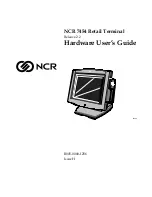
5
Chapter
5–1
Ladder Program Basics
This chapter discusses the basic operation of ladder programs. For a more
simplified introduction to ladder programming, refer to The Getting Started
Guide for HHT, catalog number 1747–NM009. This guide is intended for
the first time user.
The ladder program you enter into the controller’s memory contains bit
(relay logic) instructions representing external input and output devices. It
also contains other instructions, as described in the section “The Instruction
Set,” chapters 15 through 26.
As your program is scanned during controller operation, the changing on/off
state of the external inputs is applied to your program, energizing and
de-energizing external outputs according to the ladder logic you have
programmed.
To illustrate how ladder programming works, we chose to use bit (relay
logic) instructions, since they are the easiest to understand. The three
instructions discussed in this section are:
] [
Examine if Closed (XIC)
Analogous to the normally open relay contact. For this instruction, we ask
the processor to Examine if (the contact is) Closed."
]/[
Examine if Open (XIO)
Analogous to the normally closed relay contact. For this instruction, we ask
the processor to Examine if (the contact is) Open."
( )
Output Energize (OTE)
Analogous to the relay coil. The processor makes this instruction true
(analogous to energizing a coil) when there is a path of true XIC and XIO
instructions in the rung.
Keep in mind that operation of these instructions is similar but not equivalent
to that of relay contacts and coils. In fact, a knowledge of relay control
techniques is not a prerequisite for programming the SLC 500 Programmable
Controller.
These instructions are explained in greater detail in chapter 16, Bit
Instructions.
Ladder Programming
















































